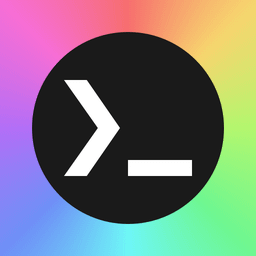“Please just put the fries in the bag. I don’t care about open source or that GNU is the operating system and Linux is the kernel or whatever you’re yappin about!”
rem26_art
- 0 Posts
- 15 Comments

 10·1 month ago
10·1 month agowhoa this program looks cool af
Definitely gonna play with this later
My TrueNAS setup uses a used Ryzen 3200G and mATX motherboard I got off of ebay for about $100 total. Honestly, any CPU with integrated graphics should be fine, so maybe something like the Intel 8500T, which was specifically a low power SKU could also work. Unless you plan on doing a lot of video transcoding, then you might need something more powerful (or a low end GPU like the Intel Arc A310 or a Radeon 6400 to go with it)
I’m not so sure how TrueNAS Scale determines how much RAM to allocate for ZFS, but at least with Proxmox, the wiki says you want to have at least 2GiB + (1 GiB/TiB of storage) of RAM to be able to be allocated.
If you’re looking to use 2TiB of storage, that would be at least 4GiB of RAM dedicated just to ZFS cache, so 8GiB of RAM would probably suit you. You might need to get more RAM in the future if you want to go with more storage at that time.
As for a case, anything will do as long as it can hold however many hard drives you ultimately wish to put in it.

 3·3 months ago
3·3 months agoA used i5-8500T or similar sounds pretty good, actually. Idk about Europe, but in the US you can get them second hand for like $30 on ebay. Seems like you can also find Passive coolers for that socket too on ebay, if you really want.
If you can find an ITX board that has the correct socket second hand, then you’d be good to go, and have options for expansion, if its got a pcie slot.
I’ve got a NAS built with used parts and its been fine for me so far. Its not as low power as yours, but the components were cheap enough that I could spend more on storage. And when its just idling, I don’t think it uses that much power (Never actually measured the power consumption at the plug. Its a Ryzen 3200g) but it sits at like 2% CPU usage most of the time with the host OS and 3 VMs running.

 79·4 months ago
79·4 months agothey’re using the Wi-fi radiation to cook your meals /s
Thats really, really dumb. I can understand maybe wanting the option of having your oven ping your phone when the timer goes off, but what could it possibly need internet access for in order to turn on the heating element and a fan for a set period of time??
 3·7 months ago
3·7 months agoI was using Hack for a long time, but I think I’ll try out Borg Sans Mono and Inconsolata for a bit

 4·8 months ago
4·8 months agonot me using up all 32GB of my RAM with firefox tabs lmao

 3·9 months ago
3·9 months agothats a nice aesthetic. i like it

 6·9 months ago
6·9 months agoApparently, the original artist is Gharliera. Here’s their ArtStation
Those people you see on LinkedIn with like 20 programming languages on their resume are really looking for a job just to pay off the debt of buying 20 computers
 11·10 months ago
11·10 months agothe wallpaper is of a vtuber, Amelia Watson. Her fans are called Teamates
Maybe not be exactly what you’re looking for, but Logseq has a daily note-taking function. When you open it for the first time of the day, it shows you a blank journal with the current date as the header and you can put whatever you want in it. It has a search function that can search through all the notes you’ve made for specific text. It saves each day as a separate markdown file and you can sync these to your phone or other devices with Syncthing, a cloud service like Google Drive, or with git if you host something like Forgejo.
The only thing about Logseq is that it doesn’t use the standard syntax for Markdown checkboxes. Instead, it has it’s own Todo syntax, which is perfectly human readable without Logseq, but loses out of some convenience if you were to migrate to something else.
and you just know this laptop is running Windows Vista

 19·1 year ago
19·1 year agoI swear Microsoft has had this weird obsession with digital assistants for decades now and users just don’t want it every time.


adding on to Noise, if you do end up in a situation where you’re considering buying refurbished enterprise hard disks, know that they are louder than normal consumer drives, esp if you have 4 of them running at once in a NAS